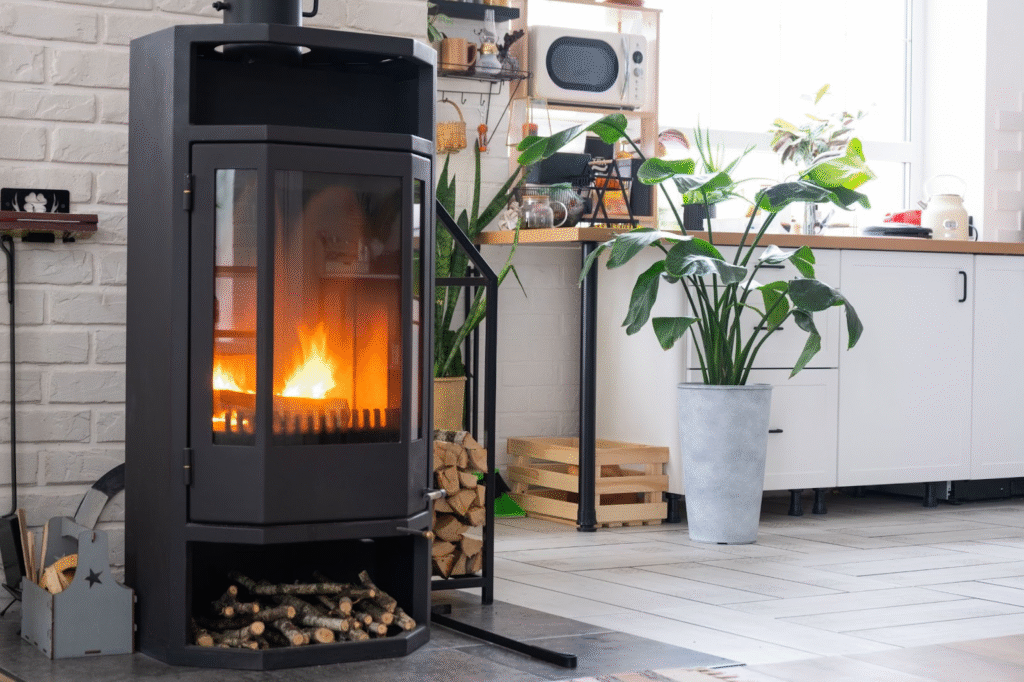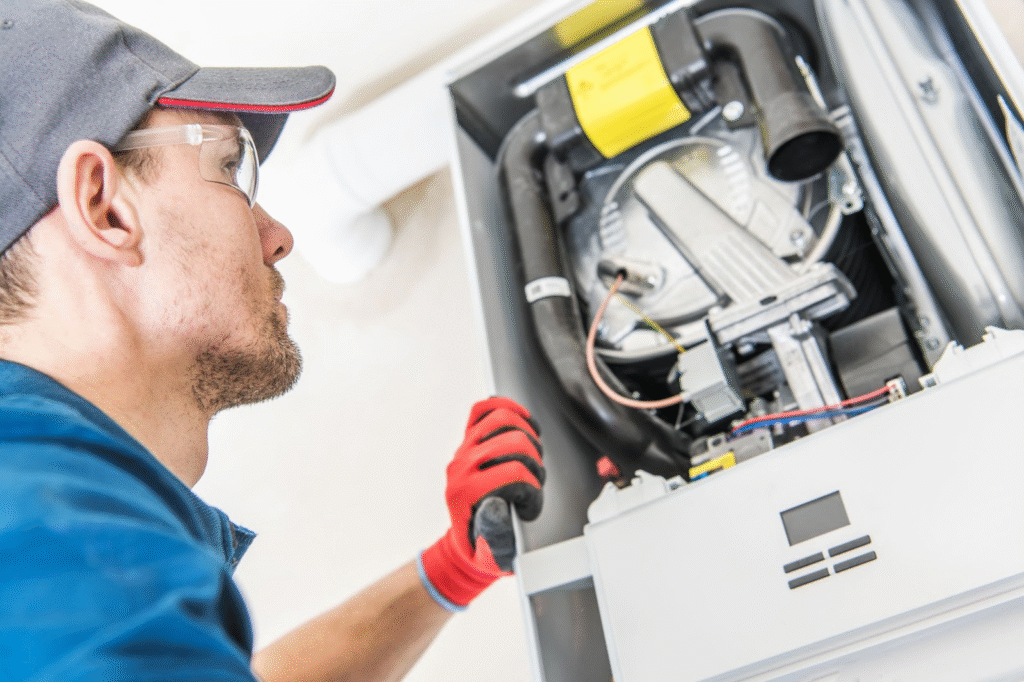Why Emergency Furnace Repair Can Help Lower Long-Term Costs

Furnace issues go beyond temporary discomfort; they quietly drain your budget. Minor faults, when ignored, often lead to costly breakdowns or full replacements. Sudden failures also drive up energy use and damage key components inside the system. Fast action with emergency furnace repair protects your comfort and long-term expenses. Every delay increases the risk of more damage, higher costs, and system failure when you need it most.
How Emergency Furnace Repair Differs from Regular Service
Emergency furnace repair handles urgent breakdowns that risk safety, comfort, or property damage, especially during extreme cold. It’s available 24/7 and focuses on restoring heat fast when the system suddenly fails. Regular furnace repair, in contrast, is scheduled in advance for non-urgent issues like routine maintenance or minor part replacements. Emergency services often cost more due to immediate response, after-hours labor, and rapid part access. The key difference lies in urgency, timing, and the potential consequences of delay. While both services fix heating issues, emergency repair prevents further damage when waiting isn’t an option.
Why Emergency Furnace Repair Cuts Future Heating Costs
A broken furnace does more than disrupt comfort; it drains money over time. Minor issues strain the system, causing it to use more energy and wear out faster. Emergency furnace repair stops this damage early, before it leads to expensive breakdowns or replacements. It restores performance, prevents energy waste, and protects your home from bigger risks. Here’s how fast, targeted repairs now can save you thousands later.
Hidden Damage Gets Worse Without Immediate Attention
A faulty furnace can’t self-correct. Minor malfunctions trigger a ripple effect of mechanical strain, system imbalance, and part degradation. Left alone, these issues compound and lead to much higher repair bills. Prompt repairs prevent one faulty part from damaging others, keeping the system balanced, efficient, and in service longer.
Minor Furnace Faults Turn Into Bigger System Problems
When one part fails, surrounding components carry the extra load. A loose fan belt stresses the motor, while dirty burners overwork the exchanger. These additional demands wear out the system faster. Emergency repair isolates the issue and eliminates the stress before it spreads. Stopping the chain reaction early is key to controlling repair costs. It’s a smart, proactive fix.
Delays Increase Labor, Parts, and Service Fees
Putting off furnace repairs rarely saves money. More damage means more labor time, replacing parts, and sometimes emergency diagnostics. What starts as a minor fix turns into a large, multi-step job. Acting fast keeps the repair scope limited. That keeps costs contained and recovery time short.
High-Cost Components Need Added Protection
Some furnace parts, like heat exchangers and blower motors, are expensive. When ignored issues lead to their failure, repairs quickly climb into the thousands. Fixing more minor problems helps shield these components from added strain. It reduces the chance of full system replacements or high-value part swaps. It’s a cost-saving move that protects your investment.
Wasted Energy Becomes Expensive Over Time
An inefficient furnace uses more energy and still delivers less comfort. Faulty parts, weak airflow, and poor calibration force the system to work overtime, driving up monthly utility bills while reducing overall performance. Addressing these issues quickly restores efficiency and lowers energy waste, helping keep your heating budget stable during peak use seasons.
Quick Repairs Reduce Heating Fuel Waste
When a furnace is off-balance, it burns more fuel than needed. Overworked burners, bad sensors, or blocked filters make the cycle longer, which means more electricity or gas is used for the same heat output. Emergency repairs reset system efficiency and fuel use, lowering monthly bills and ensuring consistent heating. It’s a measurable, ongoing return.

Fixing Airflow Improves Heat Distribution
Poor airflow forces your furnace to run longer to meet demand. Blocked vents, failing fans, or clogged filters restrict warm air movement, creating uneven heating, cold zones, and wasted fuel. Restoring airflow through prompt repair balances the system. It improves both comfort and efficiency. Every room heats properly, using less energy overall.
Heat Loss Often Comes From Leaks and Cracks
Small leaks in the ductwork or casing let heat escape before it reaches living areas, leading to temperature imbalance and rising utility costs. Emergency service teams quickly locate and seal these gaps, keeping warm air where it’s needed—inside. Tight systems run smoother and cost less to operate. It’s a simple fix with long-term impact.
Fast Repairs Add Years to System Lifespan
Furnaces don’t last forever, but they last longer with proper care. Emergency repairs reduce stress on the system and prevent early breakdowns, which can delay complete replacement by several years. Fewer part failures also mean fewer service visits and lower annual costs. It’s not just about fixing what’s broken but extending what still works.
Early Repairs Reduce Wear on Internal Parts
Faulty parts place pressure on otherwise healthy components. When one element fails, belts slip, motors overheat, and fans grind. Repairing problems before they escalate preserves internal balance. Each part works within safe limits, not under strain. This steady performance leads to longer equipment life. It’s a low-cost way to add years of use.
Timely Service Delays Costly System Replacements
A furnace replacement can cost thousands in equipment and labor. Emergency repairs help extend the lifespan of your current unit. They restore proper function and prevent damage that forces a complete upgrade. If your system is less than 15 years old, repair is often the better financial decision. It spreads out investment instead of compressing it, which is better for your budget and long-term planning.
Heat Loss Risks Home Safety and Property Damage
Losing heat in cold weather can put homes and residents at risk. Pipes freeze, indoor air quality drops, and electrical alternatives become dangerous. Emergency repairs restore warmth and prevent larger safety threats. They also help avoid significant property damage tied to cold-related failures. Quick service is often the difference between a quick fix and a costly disaster.
Frozen Pipes Lead to Costly Flood Damage
When the heat shuts off, water pipes in walls and basements freeze fast. Once frozen, they can burst and flood entire home areas, leading to mold, water damage, and expensive restoration bills. Restoring heat quickly keeps the interior above freezing, protecting your plumbing and property value. It’s a preventative move with clear financial benefits.

Fast Response Prevents Safety Hazards
Gas-powered furnaces can leak carbon monoxide or create fire hazards. Electrical faults also raise the risk of short circuits and power failures. Emergency repair crews identify and fix these dangers immediately. That keeps everyone inside safe and restores reliable heat. Quick attention prevents situations from spiraling out of control. Your safety and comfort depend on it.
Restored Function Improves Indoor Air Quality
A malfunctioning furnace may circulate dust, fumes, or carbon monoxide. These conditions make breathing harder and worsen allergies or asthma. Emergency service improves airflow, combustion, and ventilation. That clears the air, literally, and supports healthier living conditions. Clean heat matters as much as warm heat. Quick repairs bring both back.
Fixes Done Now Mean Fewer Expenses Later
Repair costs rise the longer a system remains broken. Waiting often leads to multiple technician visits, bigger issues, and extended downtime. Quick repairs today reduce the total cost of ownership over the system’s life. They also keep your warranty valid and your spending predictable. For homeowners looking to save money, fast service is an innovative business.
Avoiding Last-Minute Replacements Saves Thousands
Full furnace replacements done under pressure often come with rush fees, expedited labor, and missed rebates. Emergency repairs offer a lower-cost path. They buy you time to plan, compare options, and save for future upgrades. That kind of control leads to better financial outcomes. You avoid panic purchases and surprise bills. It’s a more strategic approach.
Controlled Repairs Mean Lower Service Frequency
Fixing problems early prevents new issues from developing. That reduces how often you need to call a technician throughout the year. Multiple small visits can easily outpace one fast, complete repair. Emergency service reduces your maintenance burden long-term. That stability benefits both your home and your wallet. Fewer problems mean fewer interruptions.
Warranty Coverage Depends on Timely Action
Most furnace warranties require prompt repairs when issues arise. Waiting could void that coverage, leaving you to cover all costs. Emergency service helps meet those deadlines and protects your warranty. That keeps you eligible for parts and labor reimbursement. It’s a small step that protects thousands in future claims. Don’t risk losing coverage due to delays.
Reliable Heat Makes Winter Easier to Manage
A stable heating system means peace of mind through the coldest months. Emergency repairs restore full performance fast, so you don’t worry about breakdowns during storms or cold snaps. That confidence reduces stress and helps you focus on what matters. It also prevents risky alternatives like unsafe space heaters or unvented backups. Staying warm shouldn’t be a gamble.
Fast Fixes Reduce Repeat Breakdowns
A high-quality emergency repair goes beyond patchwork. Heating service technicians look deeper to prevent follow-up failures. This kind of complete service reduces callbacks and repeat costs. One solid visit often resolves the issue for the rest of the season. That reliability saves time, money, and frustration: fewer problems, more peace.
Safe Heating Restores Normal Living Conditions
When the furnace fails, everything else becomes harder. Cooking, cleaning, sleeping, and even working from home feel disrupted. Emergency service restores heat fast, without the need for temporary fixes. That means you avoid the risks tied to electrical overloads or fuel-powered backups. A safe, working system supports daily life. The comfort you rely on returns.
Fix Furnace Issues Early and Save in the Long Run
Delays don’t save money—they multiply the problem. A furnace that limps through the season today can fail hard tomorrow, taking your budget. Quick, professional heating repair isn’t just about restoring heat but avoiding damage, bills, and stress. If your system shows signs of trouble, the most brilliant move is fast action. It’s not urgency but strategy. Let the next repair be the one that prevents ten more.
Ready to outsmart unexpected repairs? The Cooling & Heating Repair blog explains what every homeowner should know before winter hits.
Categories
- AC installation
- AC Installer
- AC Repair
- AC Repair/Heater Repair
- AC System Maintenance
- Air Conditioning Repair
- Air Conditioning Services
- Appliance Repair
- Furnace Repair
- Heater Repair
- Heater Repair Services
- Heating Services
- HVAC
- HVAC and Appliance Repair Services
- HVAC Installation
- HVAC Services
- Promotion
- Thermostat installation
- Uncategorized